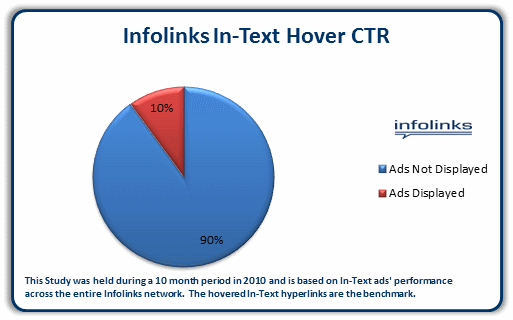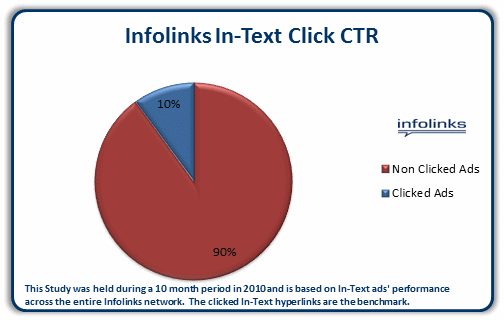It seems that everyone has a message to share these days, and blogs are a great way for publishers to share stories, guides, and more with the world. Content rules on these sites, and it is important to writers that their readers have the best user-experience possible while reading. As we know, “there’s no such thing as a free lunch,” and the same goes for content online. Publishers must find a way to monetize their content with advertising.
There are different ways to gain profit from blogging: banner ads, Google AdSense, pop-out Ads, In-Text Ads, etc. However, not all ads are created equal, and many that make noise, glow, or cause other distractions pull readers away from the actual content. So what monetization tool is the least intrusive and disturbing to the text on the page?
Infolinks decided to conduct a study that investigates the reality of readers’ behavior with In-Text ads. Exactly what percentages of visitors are truly exposed to these ads? This data can help distinguish how disruptive these ads actually are to your readers.
During a 10-month period in 2010, Infolinks conducted a study specifically focused on In-Text ads. The Infolinks Research Team monitored 40k sites within their ad network to determine what percentage of visitors to the site “hovered” over the ads and were exposed to the ad bubble. Infolinks then monitored the number of “hovering” visitors who actually clicked on the In-Text hyperlinks.
The results were interesting and beneficial for those implementing In-Text ads. 10% of visitors to the Infolinks network of publishers were in fact exposed to the In-Text Ads by hovering over the links and viewing the ad bubble. This means that 90% of the readers were not exposed to the ads at all. This is in comparison to 100% of visitors who are exposed to “noisy” banner ads.
The study also revealed that 10% of those exposed were interested enough in the ad to actually click on the bubble. So, all-in-all, In-Text Ads yield an average CTR of 1%, which is much higher than the average CTR of banner ads.
These results are proof for those opponents of In-Text Ads who claim that the In-Text option is “noisy” or “distracting”. According to our results, In-Text Ads are indeed the “least intrusive” option to monetize content. This form of advertising allows 90% of readers to bypass viewing the ads, while still revealing the ad bubbles to the 10% of visitors who are interested. Therefore In-Text advertising serves both publishers and advertisers – it doesn’t distract away from the majority of published content and the advertisers benefit by sharing their message with only interested readers.



